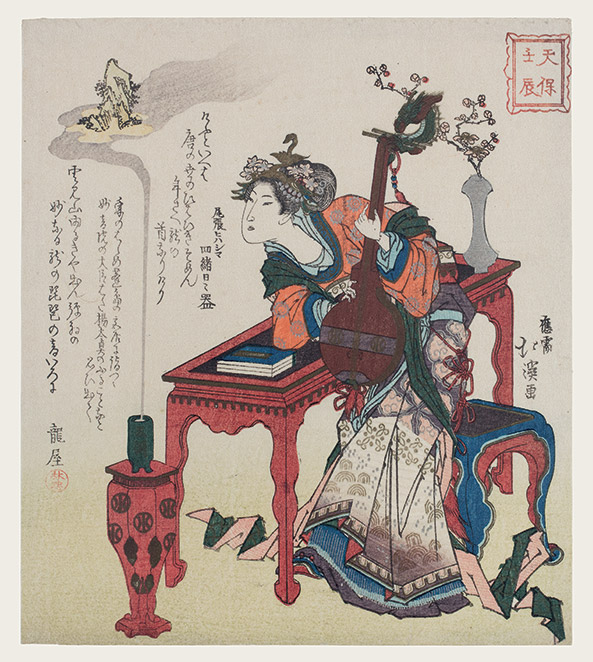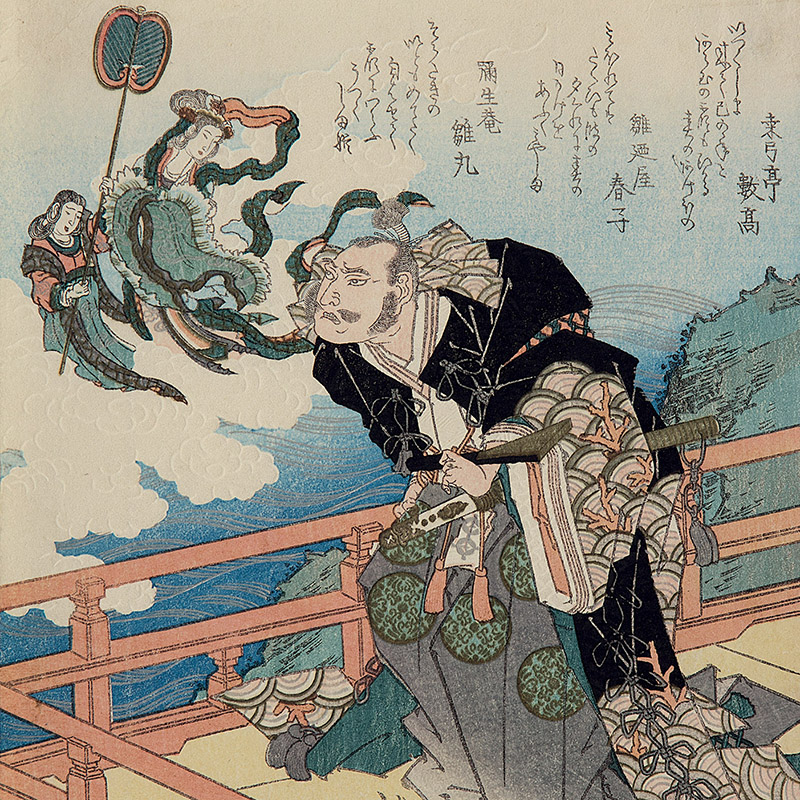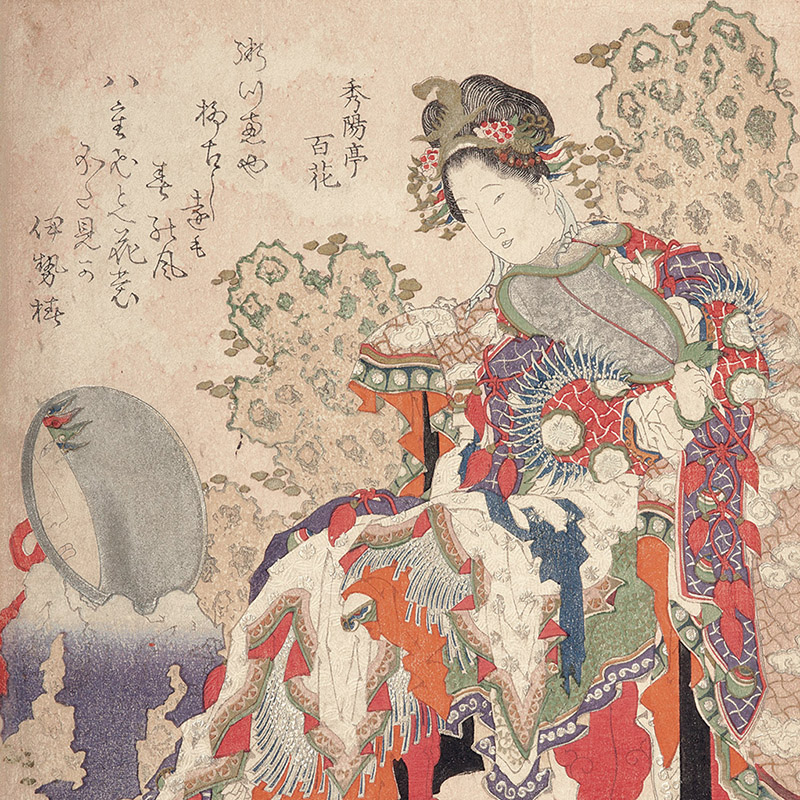Totoya Hokkey
1780 - 1850
1832
Shikishiban surimono, 206 x 183 mm
Signed: Motome ni ojite Hokkei fude (drawn on request)
Provenance: Hayashi Tadamasa, Lugt 2971
Superb impression, with extensive use of mineral powders and karazuri. Very fine colour and condition. Very rare.
The print is titled in the cartouche at top right Tempo Mizunoe tatsu, which means Dragon year 1832 and explains the presence of a dragon on the lute and on the girl’s hairstyle. Possibly the princess is a parody of Benten, the goodness of love and music. The print, for its design and technical refinement summarizes the best features of surimono.
Information on the master
Hokkei began his work as a fishmonger but quickly became one of Hokusai's best students, specializing in surimono and illustrated books. His name "Totoya" literally "fishmonger" indicates a plebeian origin, but he soon entered the workshop of the painter Yōsen'in of the Kanō school (1753-1808). From 1799 he actively worked alongside his master Hokusai and from 1810 c. he became a surimono draftsman revealing an acute sense of humor and employing very refined techniques. He actively worked on the composition of the first 'manga' volumes of the master and towards the late 1820s, after Shunman's death and after Hokusai ceased to accept surimono commissions from poetic circles, Hokkei with Gakutei became the most important and sought-after surimono designers. Hokkei cultivated a cultured and refined clientele composed of samurai, intellectuals and scholars.
Other works of the master


